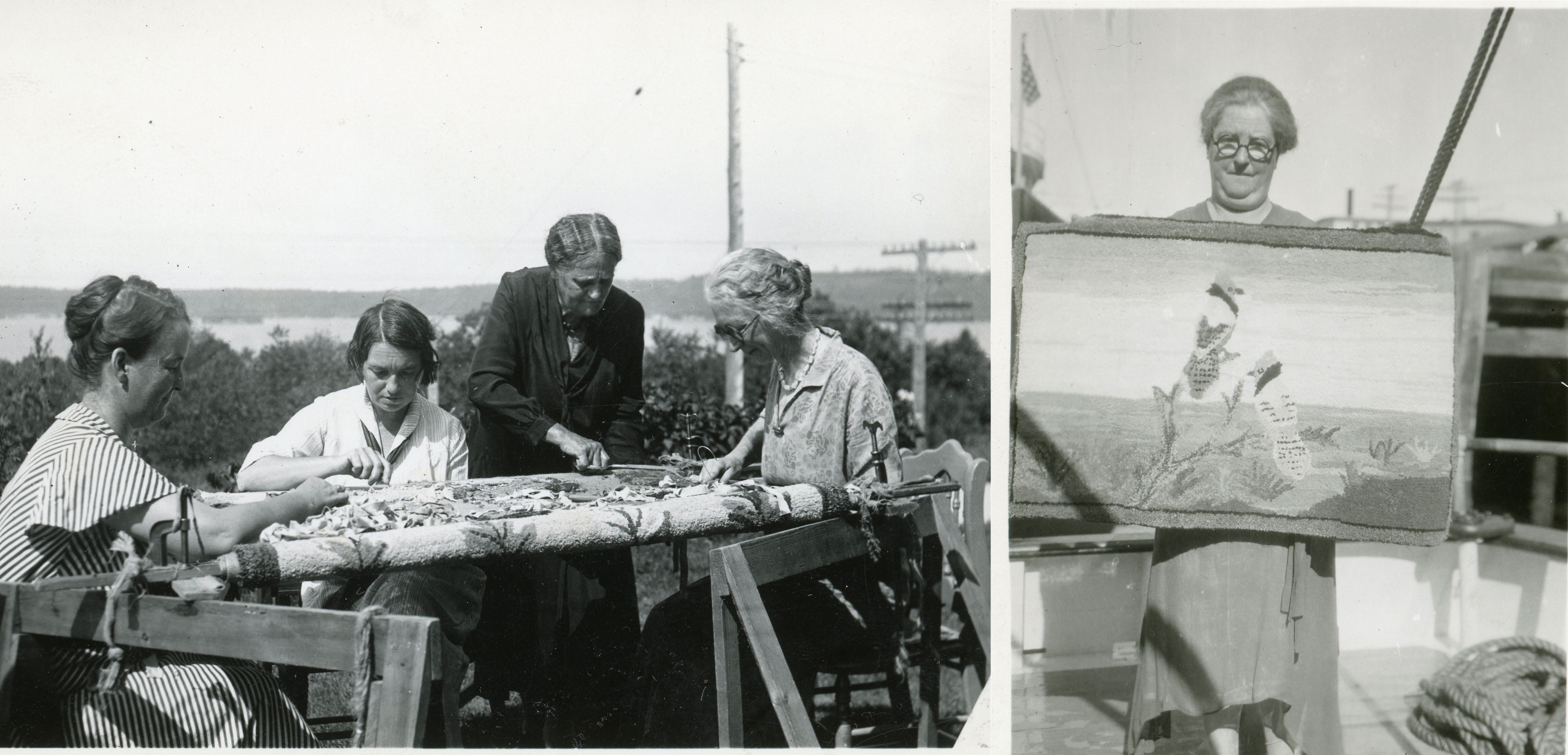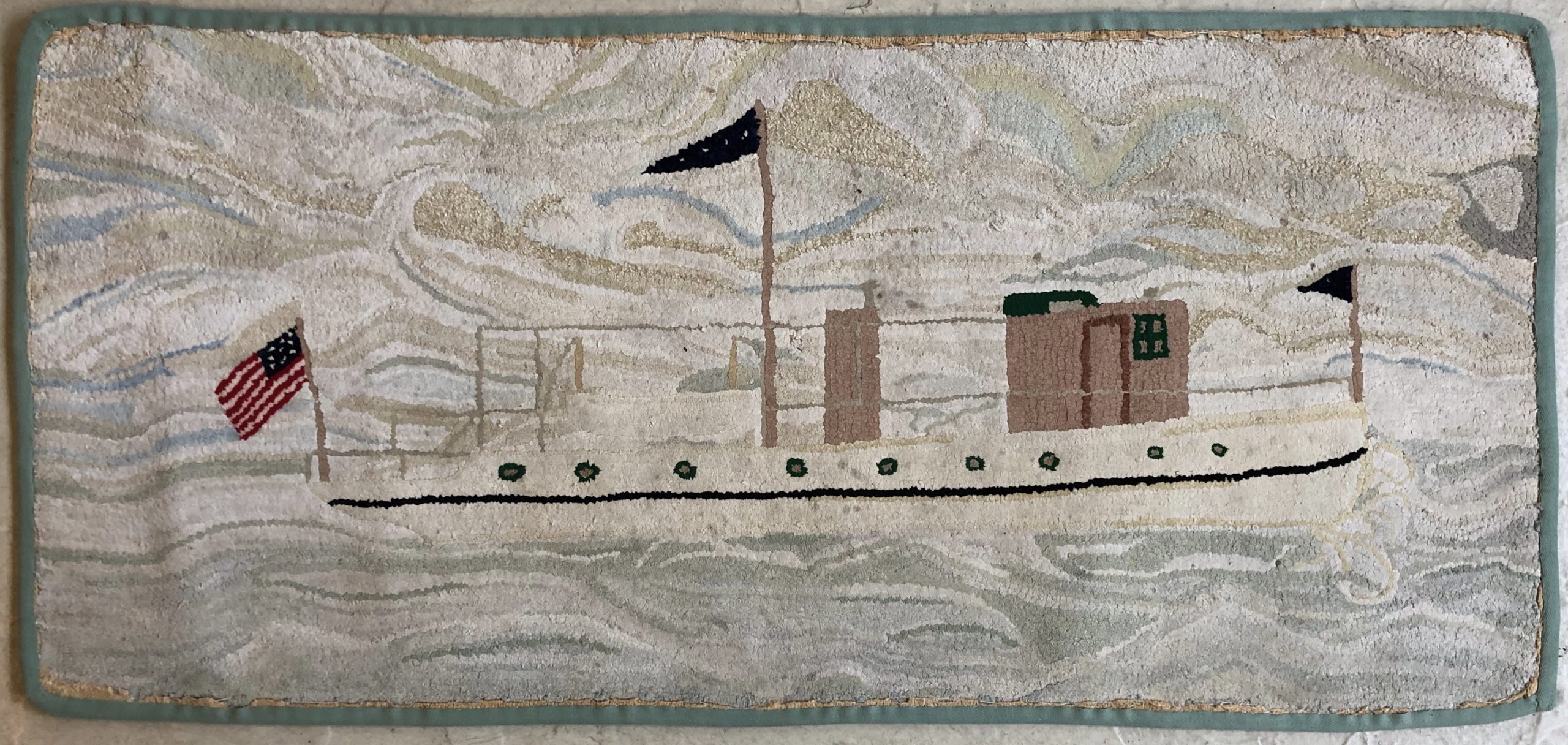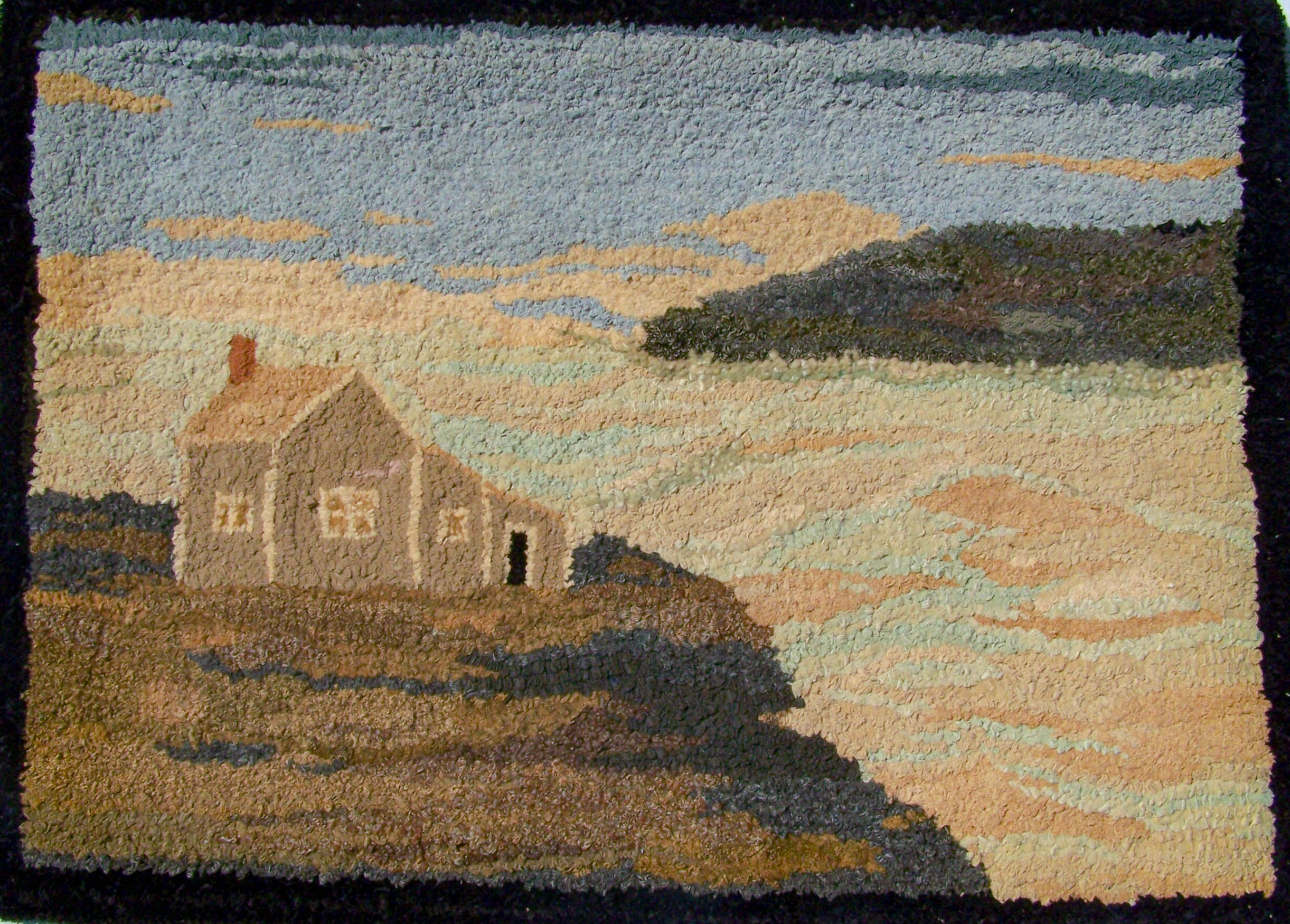
Alice Peasley, better known as “Ma,” joined the Mission in October of 1917 as an assistant missionary. Alice became well known up and down the coast as a caring but firm figure, who worked with many island communities. She would go on to work for the Mission for 28 years, doing everything from teaching to leading church services. But the program she is most known for is the Hooked Rug Department, which began just over 100 years ago.
Your gift to the Maine Seacoast Mission makes you part of all we do.
Right after starting at the Mission, Alice was quiet literally left to find her own way. In the book Anchor to Windward, Edward Valentine Mitchell writes, “In the early days Mr. [Alexander] MacDonald took Ma Peasley in the Mission boat to Crowley’s Island, and putting her ashore told her to go up to a certain house on the island. Then without a word he sailed away, leaving her there all winter.” While stranded at first, Alice stayed on Crowley for a year and had a great impact on the community. Following this success, she moved on to Head Harbor Island and Louds Island before finally settling in South Gouldsboro in 1923.
When Alice moved there, many in the community were struggling to make a living. Repairs desperately needed to be made to the local church, but there were no available funds to make these updates. While talking to the women who attended the church, Alice realized they wanted to work and make money to support both their community and families. Alice knew how to make hooked rugs and some women had sold rugs in the past. Seeing an opportunity, she helped the local sewing circle make and sell their first batch of rugs. The money they raised paid for the repairs. Starting with this first group of women, the idea for the Hooked Rug Department first started and the idea soon took off.
A year later in 1924, another circle started on Frenchboro and other independent hookers soon joined the Department, after hearing about the success of the South Gouldsboro circle. Mission Superintendent’s Orville Guptill and Alexander MacDonald were at first unsure of the venture, but Alice knew the work was important for the women she worked with. In her book, Sadie’s Winter Dream, Judith Burger-Gossart writes about her influence on the program, “Without Peasley’s vision, energy, and guidance, the hooked rug enterprise would never have matured. She calmed ruffled feathers, organized the work, did the essentials necessary for the rug hooking to proceed, and offered her endless encouragement and instruction to the women.” When Alice later wrote about the department, her passion was clear. She mentions giving her own socks to a hooker who thought the color would work for the tulips she was adding to her piece.

The program had its largest sales in 1927 and sales remained steady until 1930 when the Great Depression vastly changed the program. By 1938, Alice notes sales were few and far between and by 1942, her title changed from “Superintendent of the Hooked Rug Department” to “Dean of Staff.” With World War II eminent, it was noted that dyes were harder to find and women were now working in the sardine canaries to supply the troops.
In the years the program was operational, it had a great impact on the women involved, with more than 650 rugs made and sold during the period. And it went beyond the financial benefit, Alice wrote, “The rugs have been a bond between us and the workers. They have helped me to come into a closer relationship with them, and to gain a love and confidence in them that I otherwise might have been longer in gaining.” She employed any woman who showed interest, even if the finished product was considered “undesirable” writing the woman “tried with all her might to do good work, was cheerful, and teachable.”
Alice’s belief women could contribute to their families and communities was unique for her time. However, it was clear she forged a path for the women around her. In the 1910 census, she was listed as a “teacher” rather than housewife, and for most of her marriage, Alice was the main breadwinner in the family. Throughout her time at the Mission, she is always referred to as Mrs. Alice M. Peasley, never by her husband’s name, which was common for the day.
Alice continued to work at the Mission until 1945, spending her final years at the Mission as the “Dean of Staff” where she was the “only woman now handling executive matters on the Mission’s staff of 14, which includes missionary pastors, doctors, nurses, dentists, and others rendering professional service,” according to a profile of her in The Christian Science Monitor.
Alice was just one of the many dedicated employees who shaped the Mission over its 119 year history. Learn more about the Mission’s history over the past century by looking at the Mission’s timeline.

